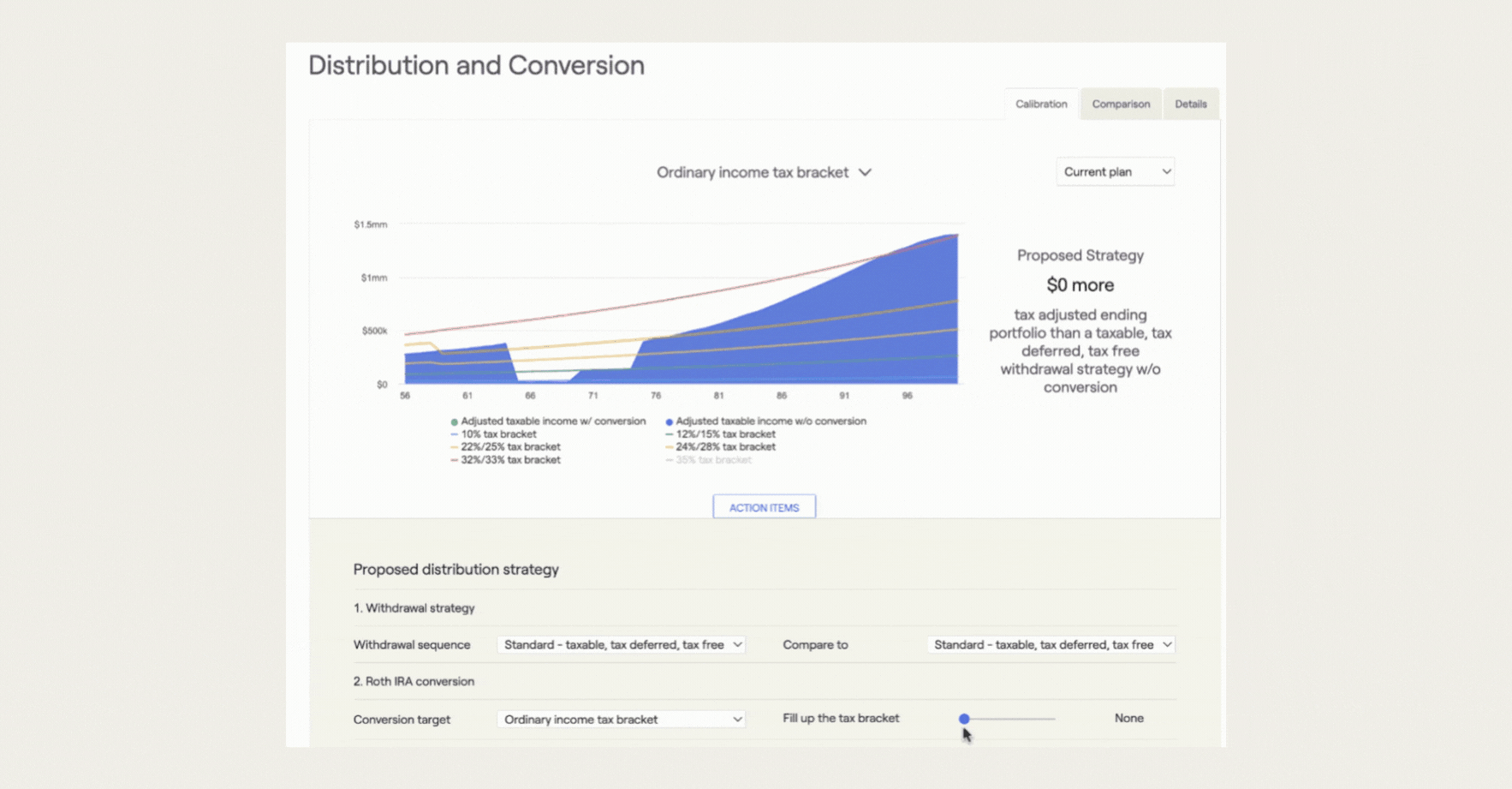
Simply put, a Roth Conversion strategy can reduce clients’ taxes during retirement and add more tax-free assets to a client’s estate. This allows clients to spend their hard-earned money on more fun expenses, such as vacations or spoiling their grandchildren. The concept can almost seem too good to be true, so being able to demonstrate your proposed plan to clients in a way they understand is vital.
As advisors know, traditional IRAs and 401(k) retirement savings accounts build up over time with tax-deferred contributions. When individuals start to receive distributions from these accounts, they are taxed according to their current tax brackets.
The first years of retirement are usually spent in a lower tax bracket since individuals have stopped receiving paychecks but haven’t yet dipped into retirement accounts. This window of time is when advisors may recommend clients pay a portion of those taxes early, by converting traditional funds into Roth IRAs. Roth conversions can be combined with other strategies, such as delaying Social Security, to expand that narrow window. Once RMDs kick in and distributions need to be taken, individuals will be in a higher tax bracket once again.
The optimal Roth conversion timing can be tricky. One reason is that Medicare premiums are based on modified adjusted gross income (MAGI) of the two previous years. Roth conversions increase the taxable income in the years they are taken. Another reason is that to avoid IRS penalties and fees, there should be at least five years before Roth conversions and accessing those funds. It also might be worth looking into conversions during a down market to minimize the taxes, while the account still has a chance to grow further, since the Roth IRA funds will be the last distributed over retirement.
If you have the right financial planning software, getting the timing right can be a little easier. RightCapital, for example, has an option where you can slide to “fill in the tax bracket” to make sure clients are making the most of their time in the lowest tax brackets.

RightCapital can help illustrate your Roth conversion proposals. For example, there are visuals to show what distributions would look like in a variety of tax brackets—ordinary income, capital gains, and Medicare—and graphs comparing the impact on tax-adjusted ending wealth, withdrawal, account balances, Required Minimum Distributions, and federal tax paid for separate strategies. Daniel walks through a number of the visuals in our Tax module in the below video:
It’s also easy to model existing Roth conversion strategies while creating plans in RightCapital. The below video walks you through it, but essentially, additional distribution cards can be added in the income section during the six-step data-entry process.
If you’d like to learn more about using RightCapital to help streamline Roth conversion planning, schedule a 1:1 demo today!